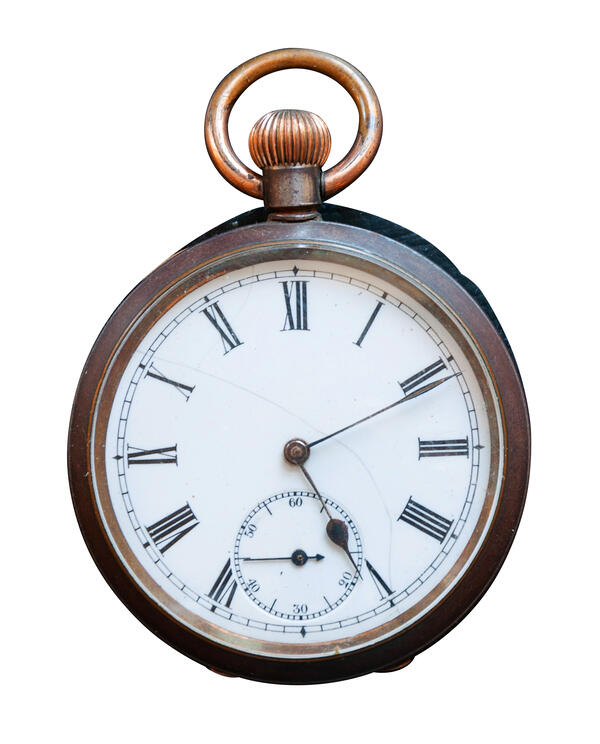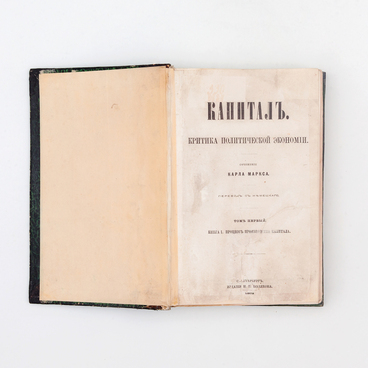In Ilya Ulyanov’s study, an Omega man’s pocket watch lies on the table. This is an authentic watch, which belonged to Ulyanov Senior. It was made in Switzerland in the second half of the 19th century. The watch has an open face, protected by glass. Such items were usually supplied with a chain, on the other end of which was a keychain or a key to wind the mechanism.
Ilya Ulyanov had two pocket watches. One day an unpleasant story happened to them. As the “Simbirskie Gubernskie Vedomosti” newspaper reported in 1884, “from a room from the table [in the Ulyanovs’ house] two pocket watches were stolen by a peasant of Buin uyezd (county), and only one watch worth 25 rubles was found.” Not far from the Ulyanovs’ house on Moscow Street was the building of the First Police Department, and Ilya was forced to apply to its employees. Theft and robbery were, according to statistics, the most frequent crimes in Russia in those years.
The pocket watch featured in the House-Museum was discovered in 1960 in Maria Ulyanova’s safe in her Kremlin apartment.
It is believed that the first mechanical pocket watch was assembled in 1503 by the German watchmaker Peter Henlein of Nuremberg. He decided to replace the pendulum and weights used in wall and floor clocks with a spiral spring. Such watch was worn around the neck, wound with a key once every two days, and was nicknamed the ‘Nuremberg Egg’ because of its round shape. Later the watches began to be carried in vest or trouser pockets. The peak of the popularity of pocket watches came at the end of the 19th century.
Louis Brandt from the Swiss city La Chaux-de-Fonds became one of the most known watch firms of the second half of the 19th century. At first, it was a simple watch-assembly workshop. It was opened by 23-year-old Louis Brandt, who made his living by assembling pocket watches from parts supplied by local artisans and then sold them all over Europe. After Louis died in 1879, his sons Louis-Paul and Cesar turned the watch assembly workshop into the Louis Brandt & Frere watch factory. They moved production to Bienne and soon created a reliable and inexpensive watch brand called Omega.
Ilya Ulyanov had two pocket watches. One day an unpleasant story happened to them. As the “Simbirskie Gubernskie Vedomosti” newspaper reported in 1884, “from a room from the table [in the Ulyanovs’ house] two pocket watches were stolen by a peasant of Buin uyezd (county), and only one watch worth 25 rubles was found.” Not far from the Ulyanovs’ house on Moscow Street was the building of the First Police Department, and Ilya was forced to apply to its employees. Theft and robbery were, according to statistics, the most frequent crimes in Russia in those years.
The pocket watch featured in the House-Museum was discovered in 1960 in Maria Ulyanova’s safe in her Kremlin apartment.
It is believed that the first mechanical pocket watch was assembled in 1503 by the German watchmaker Peter Henlein of Nuremberg. He decided to replace the pendulum and weights used in wall and floor clocks with a spiral spring. Such watch was worn around the neck, wound with a key once every two days, and was nicknamed the ‘Nuremberg Egg’ because of its round shape. Later the watches began to be carried in vest or trouser pockets. The peak of the popularity of pocket watches came at the end of the 19th century.
Louis Brandt from the Swiss city La Chaux-de-Fonds became one of the most known watch firms of the second half of the 19th century. At first, it was a simple watch-assembly workshop. It was opened by 23-year-old Louis Brandt, who made his living by assembling pocket watches from parts supplied by local artisans and then sold them all over Europe. After Louis died in 1879, his sons Louis-Paul and Cesar turned the watch assembly workshop into the Louis Brandt & Frere watch factory. They moved production to Bienne and soon created a reliable and inexpensive watch brand called Omega.



